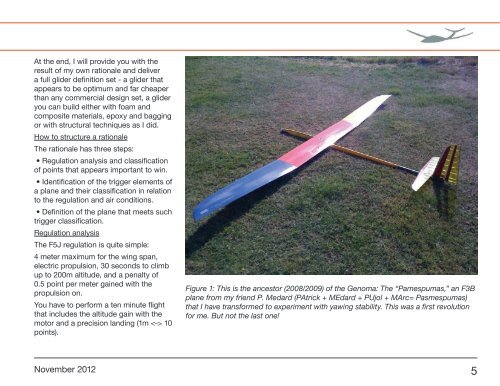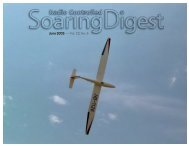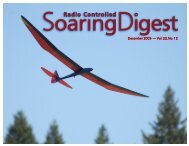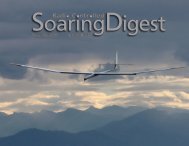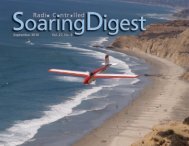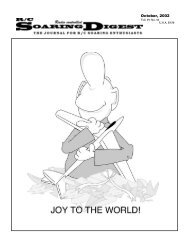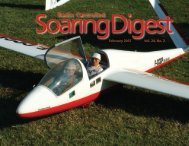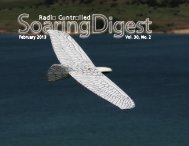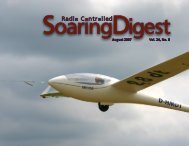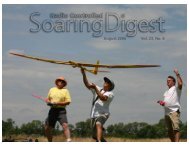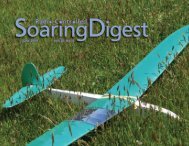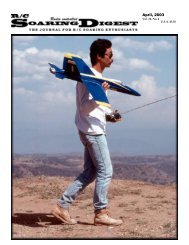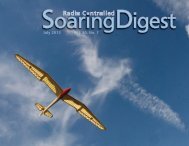Create successful ePaper yourself
Turn your PDF publications into a flip-book with our unique Google optimized e-Paper software.
At the end, I will provide you with the<br />
result of my own rationale and deliver<br />
a full glider definition set - a glider that<br />
appears to be optimum and far cheaper<br />
than any commercial design set, a glider<br />
you can build either with foam and<br />
composite materials, epoxy and bagging<br />
or with structural techniques as I did.<br />
How to structure a rationale<br />
The rationale has three steps:<br />
• Regulation analysis and classification<br />
of points that appears important to win.<br />
• Identification of the trigger elements of<br />
a plane and their classification in relation<br />
to the regulation and air conditions.<br />
• Definition of the plane that meets such<br />
trigger classification.<br />
Regulation analysis<br />
The F5J regulation is quite simple:<br />
4 meter maximum for the wing span,<br />
electric propulsion, 30 seconds to climb<br />
up to 200m altitude, and a penalty of<br />
0.5 point per meter gained with the<br />
propulsion on.<br />
You have to perform a ten minute flight<br />
that includes the altitude gain with the<br />
motor and a precision landing (1m 10<br />
points).<br />
Figure 1: This is the ancestor (2008/2009) of the Genoma: The “Pamespumas,” an F3B<br />
plane from my friend P. Medard (PAtrick + MEdard + PUjol + MArc= Pasmespumas)<br />
that I have transformed to experiment with yawing stability. This was a first revolution<br />
for me. But not the last one!<br />
November <strong>2012</strong> 5


